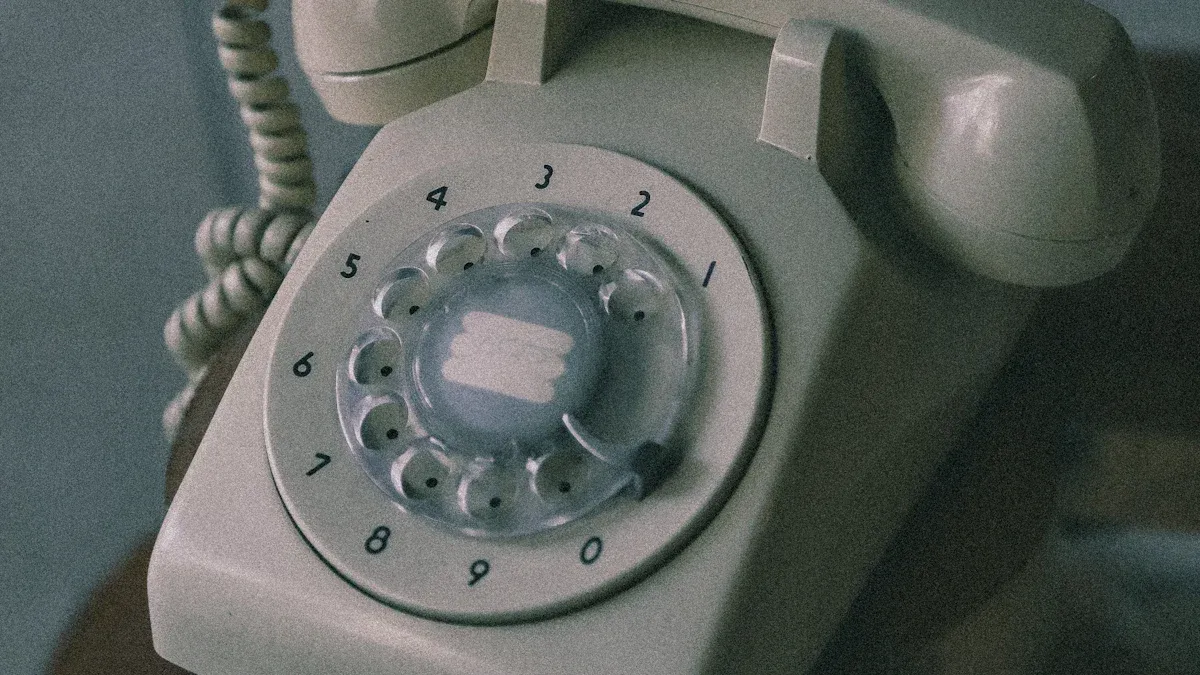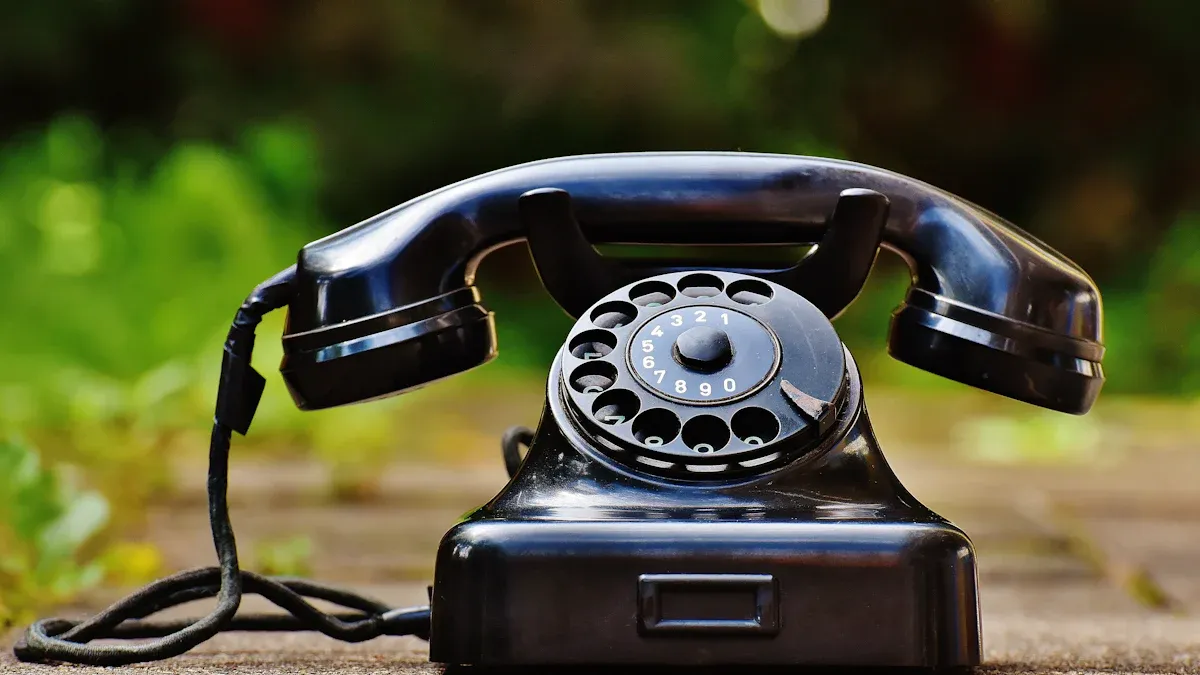
Imagine a world where long-distance conversations happen instantly. The telephone handset receiver made this possible. It gave you the power to connect with anyone, anywhere. Whether it’s a hot line dialler telephone handset or a video telephone handset, these devices transformed communication into something faster and more accessible than ever before.
Key Takeaways
- The telephone receiver changed communication by enabling quick talks over long distances. It connected people in new ways.
- New technology, like switching from analog to digital, made sound clearer. It also added features, making talking easier and more dependable.
- Wireless phones changed how we talk, letting us move while speaking. This led to today’s mobile phones.
The Origins of the Telephone Handset Receiver

Alexander Graham Bell’s Invention
You might recognize Alexander Graham Bell as the inventor of the telephone, but his work went far beyond just creating a device for communication. In 1876, Bell introduced the world to the first practical telephone. His invention allowed sound waves to be converted into electrical signals, which could then travel through wires and be transformed back into sound on the other end. This breakthrough laid the foundation for the telephone handset receiver, a critical component that made it possible for you to hear and speak during a call.
Bell’s invention wasn’t just about technology; it was about solving a problem. He wanted to help people communicate across distances without relying on written messages or face-to-face meetings. His work inspired others to refine and improve the telephone, eventually leading to the development of the handset receiver you use today.
Early Handset Designs and Their Functionality
The first telephone handset receivers were simple yet revolutionary. They combined a speaker and a microphone into a single device, allowing you to both listen and speak without switching between separate components. These early designs were often bulky and required careful handling. For example, the candlestick telephone, popular in the early 20th century, featured a separate earpiece that you had to hold to your ear while speaking into a fixed mouthpiece.
Despite their limitations, these early handsets introduced the basic functionality that modern devices still use. They allowed real-time, two-way communication, which was a game-changer for personal and business interactions. Over time, engineers worked to make these devices more user-friendly, paving the way for the compact and ergonomic designs you see today.
Challenges in Early Adoption
When the telephone handset receiver first appeared, not everyone embraced it immediately. You might find it surprising, but many people were skeptical about the new technology. Some doubted its reliability, while others found it too expensive to install and maintain. In rural areas, the lack of infrastructure made it difficult to set up telephone lines, limiting access to this groundbreaking invention.
Another challenge was learning how to use the device. For people accustomed to face-to-face communication or written letters, the idea of speaking into a machine felt unnatural. Businesses and governments had to invest in public education campaigns to teach people how to use telephones effectively. Despite these hurdles, the telephone handset receiver gradually gained acceptance, transforming communication forever.
Technological Advancements in Telephone Handset Receivers

Transition from Analog to Digital Systems
Imagine using a telephone that delivers crystal-clear sound without static or interruptions. The shift from analog to digital systems made this possible. Analog systems relied on continuous electrical signals to transmit sound, but these signals were prone to distortion and noise. Digital systems, on the other hand, convert sound into binary code—ones and zeros—which ensures more accurate transmission and reception.
You might wonder why this transition was so significant. Digital systems improved sound quality and reliability. They also allowed for advanced features like caller ID, voicemail, and conference calling. These innovations transformed the telephone handset receiver into a more versatile communication tool.
Tip: Digital systems paved the way for mobile phones and internet-based communication, making long-distance calls more affordable and accessible.
Innovations in Sound Quality and Ergonomics
Have you ever noticed how comfortable modern handsets feel in your hand? Early telephone designs were functional but lacked comfort. Engineers realized that improving ergonomics could enhance user experience. They began designing handsets that fit naturally in your hand and reduced strain during long conversations.
Sound quality also saw remarkable improvements. Early handsets often produced muffled or distorted audio. Modern receivers use advanced technologies like noise-canceling microphones and high-fidelity speakers. These features ensure that you hear every word clearly, even in noisy environments.
Here’s a quick comparison of key innovations:
| Feature | Early Handsets | Modern Handsets |
|---|---|---|
| Sound Quality | Muffled, distorted | Clear, high-fidelity |
| Ergonomics | Bulky, uncomfortable | Compact, user-friendly |
| Additional Features | Basic functionality | Noise cancellation, HD audio |
These advancements made the telephone handset receiver more user-friendly and efficient, ensuring that communication feels effortless.
The Emergence of Wireless Handsets
Imagine walking around your home while talking on the phone, without being tethered by a cord. Wireless handsets made this possible. They use radio waves to transmit signals between the handset and the base station, eliminating the need for physical connections.
Wireless technology revolutionized the way you use telephones. It gave you the freedom to move around while staying connected. This innovation also led to the development of mobile phones, which took wireless communication to a whole new level.
Note: Wireless handsets marked the beginning of portable communication, laying the groundwork for smartphones and other modern devices.
The emergence of wireless handsets didn’t just improve convenience; it also inspired further advancements in communication technology. Today, you benefit from devices that combine portability, functionality, and style—all thanks to the evolution of wireless handsets.
Societal Impact of Telephone Handset Receivers
Transforming Personal Communication
The telephone handset receiver changed how you connect with others. Before its invention, communication relied on letters or face-to-face conversations. These methods often took days or even weeks. With the telephone, you could instantly speak to someone, no matter where they were. This innovation brought families closer, especially those separated by long distances.
You no longer had to wait for a letter to hear from loved ones. Instead, you could share news, emotions, and stories in real time. This ability to communicate instantly strengthened relationships and created a sense of closeness, even when miles apart. The telephone handset receiver became a symbol of connection and convenience in personal communication.
Revolutionizing Business and Global Connectivity
Businesses also benefited greatly from the telephone handset receiver. It allowed companies to communicate faster and more efficiently. You could discuss deals, share updates, and solve problems without needing to meet in person. This saved time and resources, making businesses more productive.
On a global scale, the telephone handset receiver helped connect countries and cultures. International trade and collaboration became easier. You could now call someone across the world and work together on projects. This technology played a key role in creating the interconnected world you live in today.
Legacy in Modern Communication Devices
The telephone handset receiver paved the way for modern communication tools. Its design and functionality inspired the development of mobile phones, smartphones, and even video calling devices. You can see its influence in the way these devices combine sound quality, portability, and ease of use.
Even though technology has advanced, the core idea remains the same: enabling you to communicate clearly and instantly. The legacy of the telephone handset receiver lives on in every call you make, reminding you of its lasting impact on how the world connects.
The telephone handset receiver transformed communication. It bridged distances and brought people closer. Its evolution from basic designs to advanced technologies reflects humanity’s drive for innovation. As you embrace smartphones and modern tools, remember its legacy. This device continues to inspire new ways to connect and communicate.
Note: The telephone handset receiver remains a cornerstone of communication history, shaping how you interact with the world.
FAQ
What is the main purpose of a telephone handset receiver?
The handset receiver allows you to hear and speak during a call. It converts electrical signals into sound and transmits your voice to the other person.
How did wireless handsets change communication?
Wireless handsets gave you freedom to move while talking. They eliminated cords and inspired mobile phones, making communication portable and more convenient.
Why is sound quality important in handset receivers?
Clear sound ensures you understand conversations without repeating yourself. Features like noise cancellation and HD audio improve communication, even in noisy environments.
Tip: Look for handsets with ergonomic designs and advanced sound features for the best experience.


